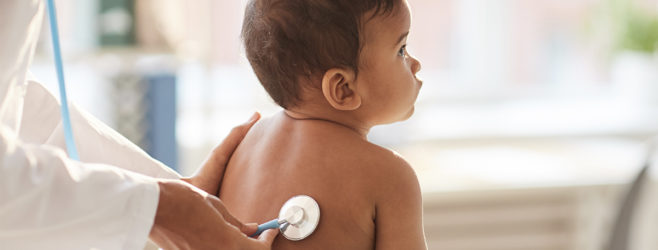The main differences between a birth defect and a birth injury are how and when the condition develops. Although these conditions can be mistaken for one another, it is very important to know the differences between birth injuries and birth defects to get your child the treatment they need.
Birth injuries develop before, during, or shortly after the birthing process. Physical trauma to a baby can result in a birth injury and, unfortunately, go unnoticed for years until the child fails to meet typical development milestones.
Birth injuries can be caused by medical negligence and affect 7 out of 1,000 babies every year.
Birth defects develop while the child is in the womb, often during the first trimester of pregnancy. They are usually detected before or right after delivery. Some birth defects have no particular cause, whereas others stem from external factors.
Learn more about the types, causes, and prevention of birth defects.
Common Types of Birth Defects
There are many common types of birth defects and each can vary in severity.
Birth defects affect 1 in 33 newborns in the U.S. each year, according to the Centers for Disease Control and Prevention (CDC).
10 most common birth defects are:
- Heart defects (pulmonary atresia, hypoplastic left heart syndrome, and more)
- Clubfoot
- Cleft lip and cleft palate defects
- Down syndrome
- Abdominal defects (gastroschisis and omphalocele)
- Brain and spinal defects (spina bifida, anencephaly, and encephalocele)
- Limb defects (missing fingers or otherwise smaller arms and legs)
- Muscle defects (diaphragmatic hernia)
- Esophagus defects (esophageal atresia)
- Eye defects (anophthalmia and microphthalmia)
Birth defects can affect any part of the child’s body. Depending on the type and severity of the birth defect, some children may experience lifelong impairments.
What Causes Birth Defects
The main difference between birth injuries and birth defects is the cause. Birth injuries are often caused by trauma during the birthing process, whereas birth defects only develop when the child is in utero during pregnancy.
Most birth defects develop within the first three months of pregnancy when the baby’s organs begin to form, according to the CDC. However, birth defects can still develop in the last six months of pregnancy.
Unfortunately, the causes of birth defects are unknown in most cases. However, the CDC states that some birth defects can be caused by a mixture of genetic and environmental (outside) factors.
Some people who were exposed to contaminated water at U.S. Marine Corps Base Camp Lejeune in North Carolina during their pregnancy were more at risk of their child developing birth defects. Legal help is available for affected families. Contact us to see if you’re eligible.
Preventing Birth Defects
Many birth defects have unknown causes and sometimes cannot be prevented. However, there are certain steps parents can take to reduce the chance of birth defects.
Some ways parents can potentially reduce the risk of birth defects include:
- Attend all prenatal checkups to monitor how the child is developing
- Avoid alcohol, drugs, smoking, and secondhand smoke
- Avoid hot tubs, saunas, and overheating
- Consult your doctor to make sure any medications you are taking are safe during pregnancy
- Get immunized as recommended by your doctor to prevent certain illnesses
- Take folic acid supplements every day before and during pregnancy
- Treat fevers higher than 101 degrees with medication recommended by a doctor
Remember to always talk with your doctor about taking any supplements or medications.
Resources for Families Affected by Birth Injuries
If you believe your child is showing signs of a birth injury or a birth defect, be sure to consult their doctor. Although many birth defects are diagnosed before the child is born, some may not be apparent until later on. Your child’s doctor will be able to determine if their condition is a birth defect or injury.
If your child is diagnosed with a birth injury, you may be able to file for financial assistance. This can be life-changing for families struggling to pay for their child’s care.
The Birth Injury Justice Center is here for you. We can connect you with top birth injury lawyers who will fight for the most compensation available to you.
Get a free case review today to learn if you qualify.



